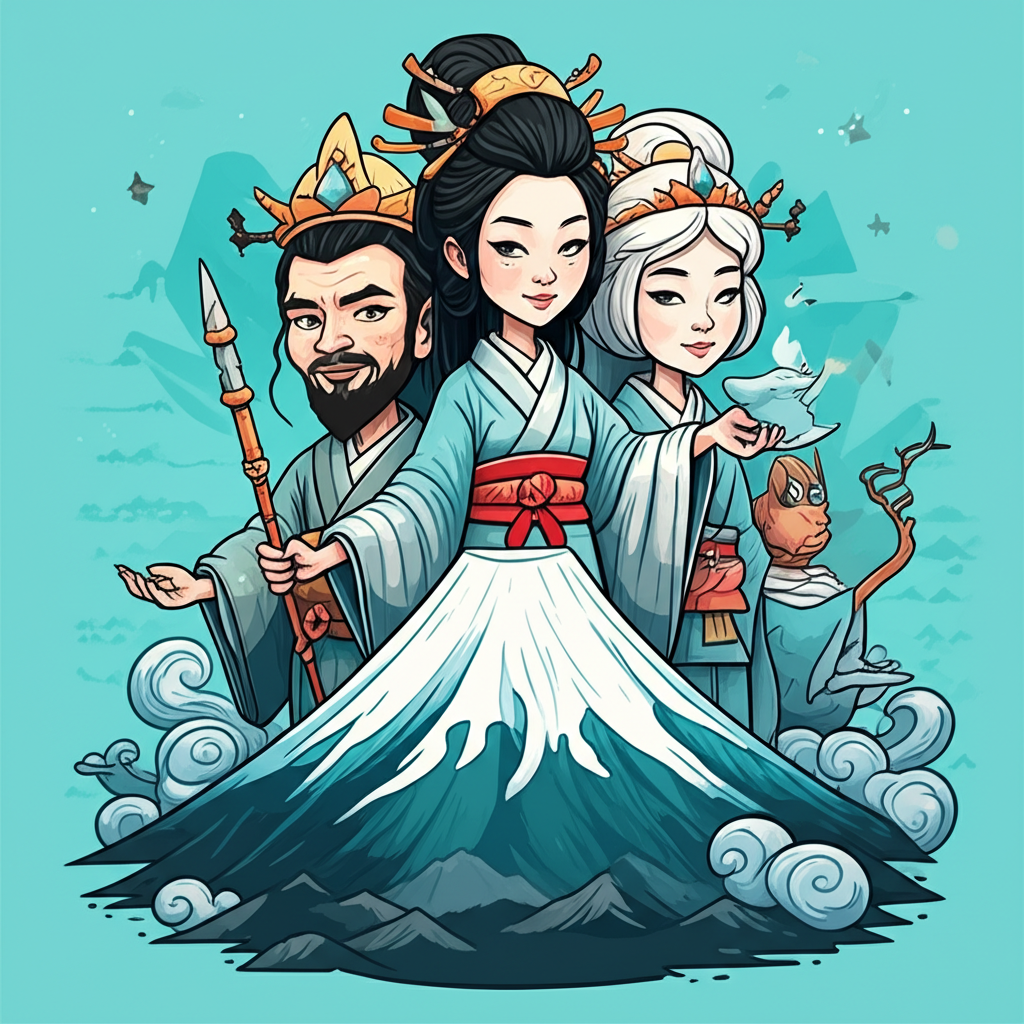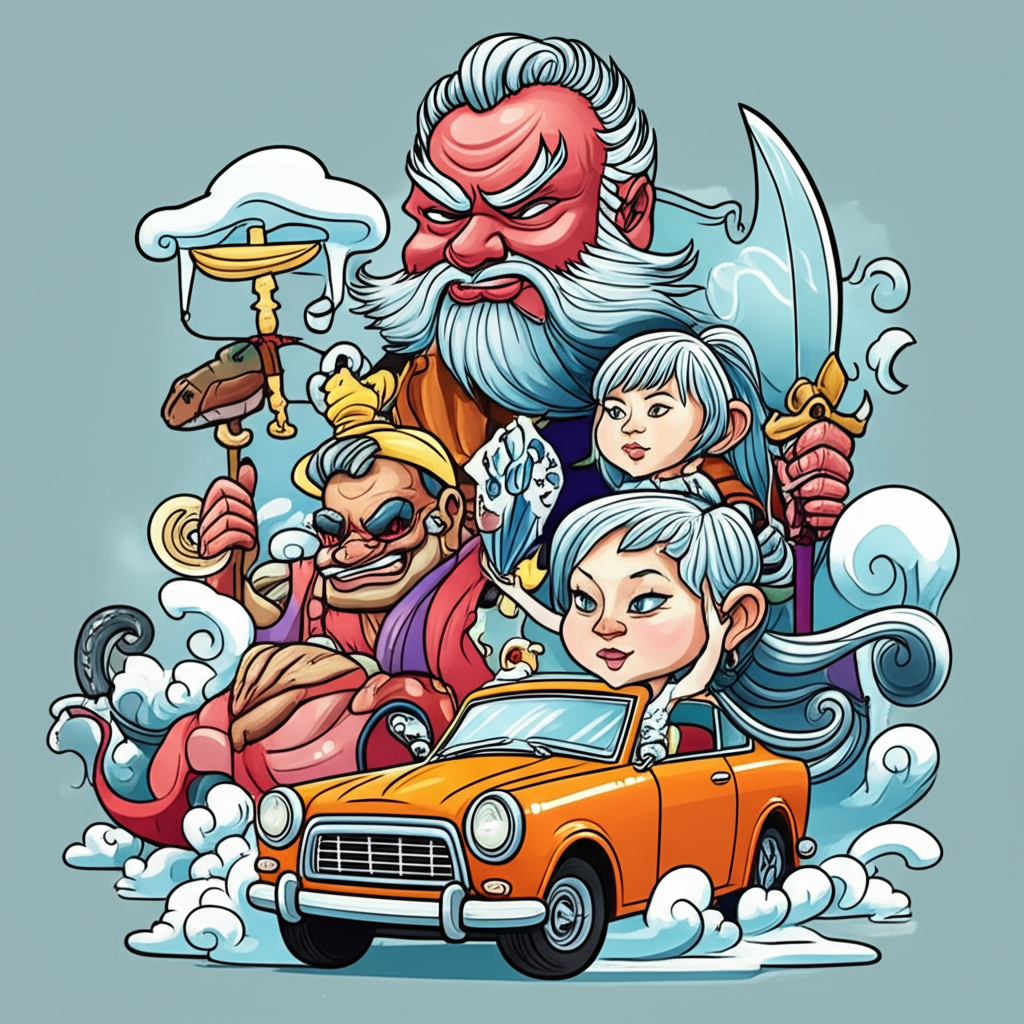
Guardians of Mount Fuji: Yuki-onna
Introduction
From the snow-laden peaks and frosted valleys of Japan comes a chilling tale, a whisper on the wind that speaks of Yuki-onna, the Snow Woman. This figure, a prominent character in Japanese folklore, embodies the harsh beauty and unforgiving power of winter. The story of Yuki-onna is not a claim of reality but a traditional narrative passed down through generations, a way for ancient people to understand and personify the forces of nature that shaped their lives. It is a story told not for worship, but for cultural preservation, entertainment, and a glimpse into the worldview of a bygone era.
Origins and Cultural Background
The myth of Yuki-onna likely originated in the mountainous regions of Japan, particularly during the Edo period (1603-1868). This era was marked by relative peace and stability, allowing for the flourishing of arts, culture, and folklore. Life was deeply intertwined with nature, and people lived in close proximity to the elements. The harsh winters, especially in the mountainous regions surrounding Mount Fuji, were a constant presence, bringing both beauty and hardship.
The people of this time viewed the world as populated by spirits and deities known as "kami," which inhabited natural features such as mountains, rivers, and trees. These kami could be benevolent or malevolent, and humans had to maintain a harmonious relationship with them through rituals and respect. Natural phenomena like blizzards and avalanches were not simply weather events; they were expressions of the kami’s power and will. The story of Yuki-onna, therefore, arose as a way to explain and personify the dangers and allure of winter, particularly the treacherous snowstorms that could easily claim lives. It reflected a world where nature was not something to be conquered but something to be revered and feared.
Character / Creature Description
Yuki-onna is typically depicted as a tall, beautiful woman with long black hair and pale, almost translucent skin. Her beauty is ethereal and otherworldly, often described as mesmerizing. She wears a white kimono, which blends seamlessly with the snow, making her nearly invisible in a blizzard. In some versions of the tale, she has no feet, floating silently above the snow.
Symbolically, Yuki-onna embodies the duality of winter. Her beauty represents the captivating allure of a snow-covered landscape, while her coldness and potential for violence represent the danger and unforgiving nature of winter storms. Her pale skin and white kimono symbolize purity and death, reflecting the life-taking power of the cold. The absence of feet can be interpreted as her being a spirit unbound by the physical world, a manifestation of the natural elements. She is not necessarily evil but rather an embodiment of the impartial forces of nature, capable of both kindness and cruelty.
Main Story / Narrative Retelling
On a frigid winter night, two woodcutters, Minokichi and Mosaku, were caught in a blizzard high in the mountains near Mount Fuji. They sought shelter in a small, abandoned hut, hoping to wait out the storm. Mosaku, being much older, quickly fell asleep, but Minokichi remained awake, listening to the howling wind and the relentless snow.
Suddenly, the door of the hut creaked open, and a woman entered. She was breathtakingly beautiful, with skin as white as the snow outside and long, dark hair that cascaded down her back. Minokichi was transfixed by her beauty. The woman glided towards Mosaku, and with a single, icy breath, she froze him solid.
She then turned her gaze to Minokichi. He was paralyzed with fear, unable to move or speak. The woman leaned close, her breath sending shivers down his spine. "I was going to kill you," she whispered, her voice like the rustling of winter leaves, "but I can’t bear to. You are young and handsome. I will spare your life, but on one condition: you must never speak of what you saw tonight. If you do, I will know, and I will take your life."
With those words, she vanished, leaving Minokichi alone with the frozen corpse of his companion. He managed to escape the hut the next morning and returned to his village, where he mourned the loss of Mosaku.
Years passed, and Minokichi tried to forget the encounter, but the memory of the Snow Woman haunted him. Eventually, he met a kind and beautiful woman named O-Yuki (which also means "snow"). He fell in love with her, and they married and had several children. O-Yuki was a devoted wife and mother, and Minokichi found happiness he never thought possible.
One night, as they sat by the fire, watching their children play, Minokichi found himself overcome with the urge to share his secret. He looked at O-Yuki, her face illuminated by the firelight, and he couldn’t help but notice her extraordinary beauty, which seemed unchanged by time. He began to tell her the story of the night he spent in the mountains, of the Snow Woman and her chilling promise.
As he spoke, O-Yuki’s expression changed. Her face grew cold and hard, her eyes filled with a chilling light. When he finished his tale, she stood up, her voice now filled with an icy rage. "It was I!" she cried. "I spared you because you were young and kind. But you broke your promise! If it weren’t for our children, I would kill you now. But I cannot abandon them."
With that, she transformed into a cloud of mist and floated out the door, disappearing into the night, never to be seen again. Minokichi was left alone with his children, forever haunted by the memory of the Snow Woman and the price of breaking his promise.
Symbolism and Meaning
To the people who told this story, Yuki-onna likely represented the unpredictable and dangerous nature of winter. She symbolized the fear of the unknown, the vulnerability of humans against the forces of nature, and the importance of keeping one’s word. The tale also explores themes of love, loss, and the consequences of breaking promises. The character of Yuki-onna served as a reminder to respect the power of nature and to be wary of its deceptive beauty.
The story might also have been a cautionary tale about the dangers of the mountains and the need for caution during the winter months. It served as a way to instill respect for the environment and to remind people of the importance of community and support in the face of hardship.
Modern Perspective
Today, the myth of Yuki-onna continues to resonate in Japanese popular culture and beyond. She appears in numerous books, films, anime, manga, and video games, often portrayed as a tragic and complex figure. Modern interpretations often explore her motivations and her relationship with humans, portraying her as both a victim and a perpetrator.
In cultural studies, Yuki-onna is often used as an example of how folklore can reflect and shape societal attitudes towards nature, gender, and morality. Her story provides insights into the values and beliefs of past generations and continues to inspire artists and storytellers today.
Conclusion
The tale of Yuki-onna is a captivating example of Japanese folklore, a story told to entertain, educate, and reflect the cultural values of a bygone era. It is a reminder of the power of storytelling and the enduring human fascination with the mysteries of nature. As Muslims, we understand that these are stories created by people and are not divine truths. We believe that only Allah is the true Creator and Sustainer of the universe. This story of Yuki-onna, like countless others from around the world, serves as a window into the rich tapestry of human imagination and the enduring power of cultural heritage. It encourages us to appreciate the diversity of human expression and the enduring legacy of storytelling traditions.





